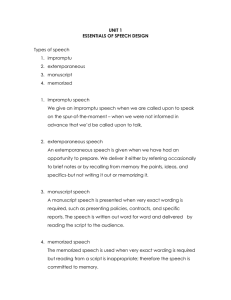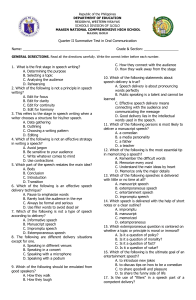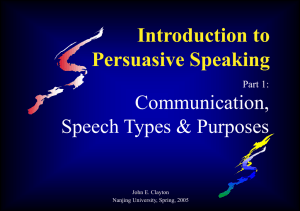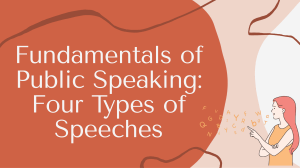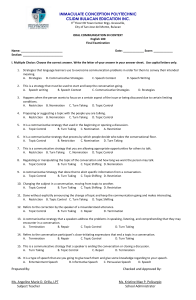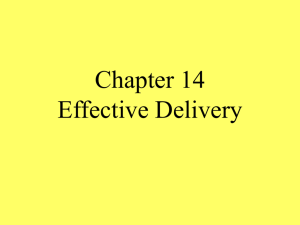File - Mrs. Shepard's Classes
advertisement
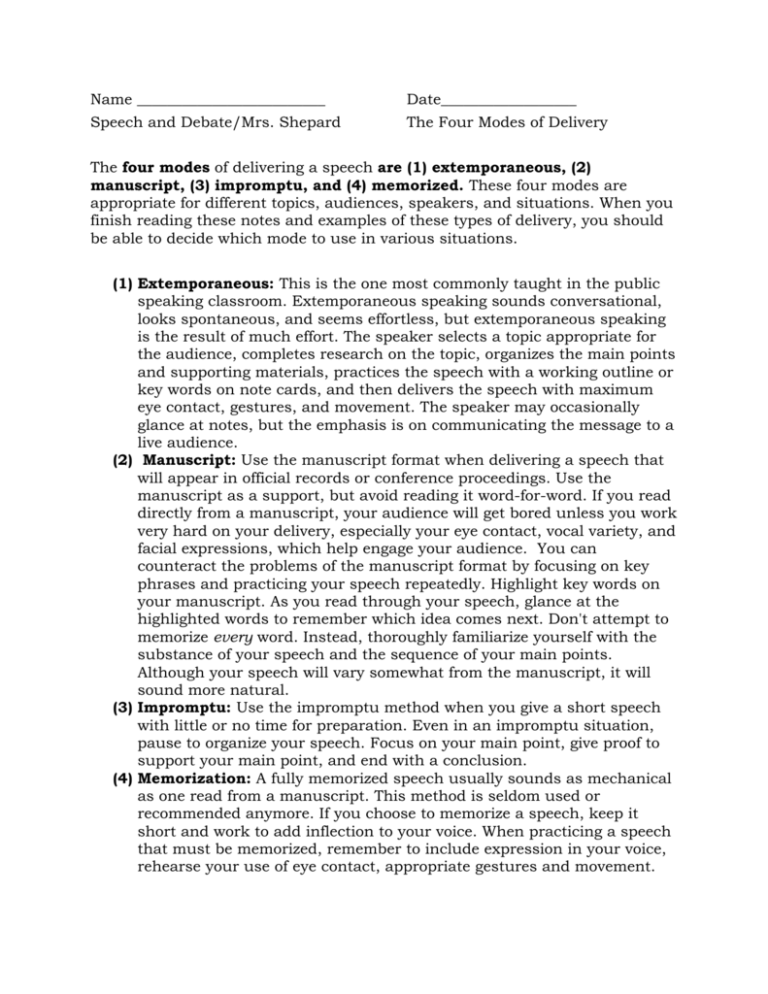
Name _________________________ Date__________________ Speech and Debate/Mrs. Shepard The Four Modes of Delivery The four modes of delivering a speech are (1) extemporaneous, (2) manuscript, (3) impromptu, and (4) memorized. These four modes are appropriate for different topics, audiences, speakers, and situations. When you finish reading these notes and examples of these types of delivery, you should be able to decide which mode to use in various situations. (1) Extemporaneous: This is the one most commonly taught in the public speaking classroom. Extemporaneous speaking sounds conversational, looks spontaneous, and seems effortless, but extemporaneous speaking is the result of much effort. The speaker selects a topic appropriate for the audience, completes research on the topic, organizes the main points and supporting materials, practices the speech with a working outline or key words on note cards, and then delivers the speech with maximum eye contact, gestures, and movement. The speaker may occasionally glance at notes, but the emphasis is on communicating the message to a live audience. (2) Manuscript: Use the manuscript format when delivering a speech that will appear in official records or conference proceedings. Use the manuscript as a support, but avoid reading it word-for-word. If you read directly from a manuscript, your audience will get bored unless you work very hard on your delivery, especially your eye contact, vocal variety, and facial expressions, which help engage your audience. You can counteract the problems of the manuscript format by focusing on key phrases and practicing your speech repeatedly. Highlight key words on your manuscript. As you read through your speech, glance at the highlighted words to remember which idea comes next. Don't attempt to memorize every word. Instead, thoroughly familiarize yourself with the substance of your speech and the sequence of your main points. Although your speech will vary somewhat from the manuscript, it will sound more natural. (3) Impromptu: Use the impromptu method when you give a short speech with little or no time for preparation. Even in an impromptu situation, pause to organize your speech. Focus on your main point, give proof to support your main point, and end with a conclusion. (4) Memorization: A fully memorized speech usually sounds as mechanical as one read from a manuscript. This method is seldom used or recommended anymore. If you choose to memorize a speech, keep it short and work to add inflection to your voice. When practicing a speech that must be memorized, remember to include expression in your voice, rehearse your use of eye contact, appropriate gestures and movement. Suggestions on when to use each mode of delivery: Use the extemporaneous method to present a carefully prepared speech from brief notes. Use manuscript method to deliver a speech that will become part of an official record or conference proceedings. Use the impromptu method to present a single point in an unscheduled speech. Use the memorization method sparingly, if at all, for short speeches such as toasts and introductions.
